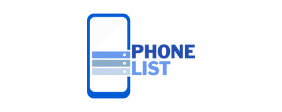Backlinko’s experiments confirm that optimizing your title tag can improve CTR . Sometimes, just adjusting the length of your title tag is enough to get more clicks Optimize title tags.
Optimize your page’s title tag by following these best practices:
- Aim for 6-9 words: Studies have found telemarketing data that titles with six to nine words tend to have the highest CTR. Also, make sure your title is under 60 characters total, or it won’t appear in full in the SERPs.
- Include your primary keyword: Use the page’s target keyword in the title. This will tell the user that the page is actually about the topic they’re searching for. And it will often appear in bold in SERPs. Plus, it’s good SEO practice.
- Describe the content: Make sure your title describes the content of your page, whether it’s a guide, a list of tips, or a review Optimize title tags.
- Don’t stuff keywords: Using your target keyword once is fine. Using it multiple times (or stringing together numerous synonyms) is excessive and can drive users away from your site.
4. Improve Meta Descriptions
Meta descriptions help users better understand the content of your page when reviewing search results.
It is not a Google ranking factor, so optimizing boosting your youtube channel: how to engage and gain subscribers fast your meta description will not shoot you to the top of the SERPs.
But it can help convince someone to click through to your site.
It’s kind of like the subtitle of your page’s ad.
Here are some good practices:
- Get the length right: Meta descriptions can be 680px long, or about 105 characters. Try to get as close to that limit as possible without going over. If it’s too long, people will only see part of it in search results. If it’s too short, you’re wasting valuable space that could be used to your advantage.
- Add your keyword: Using your main keyword in the meta description can help draw the user’s attention to the result. Google often bolds the sections of the meta description that match the user’s search query.
- Consider search intent: Write your meta description with your target audience in mind. Their search intent could be to learn, make a purchase, or research a brand. Make sure your meta description meets their expectations by using language that reflects their intent. (For example, “learn,” “buy,” “compare,” etc.)
- Include a CTA: Encourage the reader to take a step. As with all copywriting, crafting a meta description is all about compelling action.
- Make each meta description unique: Don’t copy and paste the same description on multiple or all pages of your website
Please note that Google does not always display the meta description exactly as you have written it.
So while it’s worth spending time crafting a compelling description, don’t be surprised if Google uses another snippet of text from the page instead.
5. Target Rich Snippets with Schema Markup
In some cases, Google will use schema markup on your page to add additional functionality to your site’s SERP listing.
These features are called rich snippets. (They are sometimes called “rich results.”)
They give your site extra space in the SERPs, which can increase your CTR.
Rich snippets include things like
- Sitelinks
- Comments
- Recipes
- Frequently Asked Questions
Here is an example of a rich snippet:
How do you get them?
The main way to influence your likelihood of getting rich snippets is to implement schema markup on all relevant elements of your page.
Schema markup is additional code added to your site’s HTML that helps search engines better understand the content of the page.
Markup describes the elements of your page in a structured data language that is easily understood by crawlers and robots.
It looks like this:
Follow this guide to optimize rich snippets .
In some cases, you can enable sitelinks (additional links to landing pages on your site or sections within your page) without schema.
Try adding an index.
Having a structured table of contents that lists (and links to) each heading or section on the page can make sitelinks appear.
It also improves the readability of your content and user experience (UX) .
6. Optimize the page URL
Your site and URL structure appear in the SERP listing along with your page title and a meta description. And it can affect your CTR.
The path of the page that appears in the SERPs typically follows the URL structure of your site.
It’s not very pretty, is it?
Optimizing your URL and site structure can improve the way your ad appears. Plus, it has additional benefits for SEO and user experience Optimize title tags.
7. Target long-tail keywords
You can improve your organic ukraine business directory CTR by adjusting your SEO strategy.
We know that your ranking is one of the most important factors.
Therefore, if you achieve a higher position in the SERPs, you are likely to see a higher CTR.
But how to get a better ranking?
One strategy is to focus on long-tail keywords . These are keywords that typically have lower search volume than short-tail keywords (or “head terms”).
But they also tend to be less competitive.

